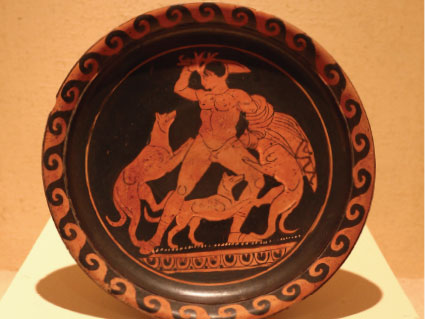




The Holy Week funeral marches in Canosa. In the celebrations surrounding a ritual moment, in every era, music has always played an important role due to its ability to provoke emotions and draw in the participants. Until a few years ago the population of Canosa would listen to the Funeral Marches that accompanied the procession without ever asking themselves when they originated. This silence, after lasting more than a century, was broken thanks to the interest of a Canosa musician who the press and music critics consider to be part of Canosa's "heritage" for his research work, and above all his clarity with the scholars, researchers, and enthusiasts of Canosa's Holy Week rites. There are many people from outside the area, and tourists who enjoy Easter religious tourism, who are intrigued by the traditions of Easter in Apulia, and they immortalise with video cameras or on audio tape the tear jerking "Funeral sounds" of these rites. Emotions are strong and the role of the band is fundamental for the "Musical comment" that rules the goings on. Today we are able to answer many of the questions about this music that for many years was neglected and shown only indifference by many people. Casting light on the subject and answering with great professionalism those who care about keeping our musical traditions alive is the greatly esteemed Prof. Vitaliano Iannuzzi , a multi-faceted musician, the Professor of Pianoforte at the Bari "N Piccinni" Music Conservatory, concert musician, conference speaker, and author of many historical-religious-teaching-educational-published papers, choral and orchestra conductor, known throughout Italy and the world. Thanks to Prof. Vitaliano Iannuzzi, Canosa di Puglia possesses a volume of scores for treble voices, polyphonic choir, and piano, containing 12 hymns from Canosa, including the notable "Inno alla Desolata" (Maria Desolata). A hauntingly sorrowful hymn, of whose origins we now have exact knowledge. The words were written by Jacopone da Todi with a translation by the Carmelite Evasio Leone; whereas the music was written by the Canosa clarinet player "Domenico Iannuzzi" (1862 - 1929). The research carried out by Prof. Vitaliano Iannuzzi was thorough, and led to the finding of musical scores dating back to the end of the 19th century, and has been widely reported and divulged in the culture pages of "La Gazzetta del Mezzogiorno". Recently Prof. Vitaliano Iannuzzi spoke at the conference "Canosa Ricerche Storiche 2009" where he illustrated with precision and in detail the technical-historical characteristics of the music scores from the end of the 19th century As far as regards the funeral marches, the celebrated musician informed us that the Canosa marching band plays funeral marches by the following composers from Canosa during the procession of the mysteries: - Giuseppe Pasculli Born in Canosa di Puglia on 1/12/1869. Moved to Milan on 12/09/1934. Died in Milan on 09/07/1939. Composer of the following funeral marches: - "La pietra sepolcrale" - "Sul Golgota" - "I martiri del lavoro" - Sabino Iannuzzi - Born in Canosa di Puglia on 6/5/1928 - Died in Canosa di Puglia on 8/1/2004.